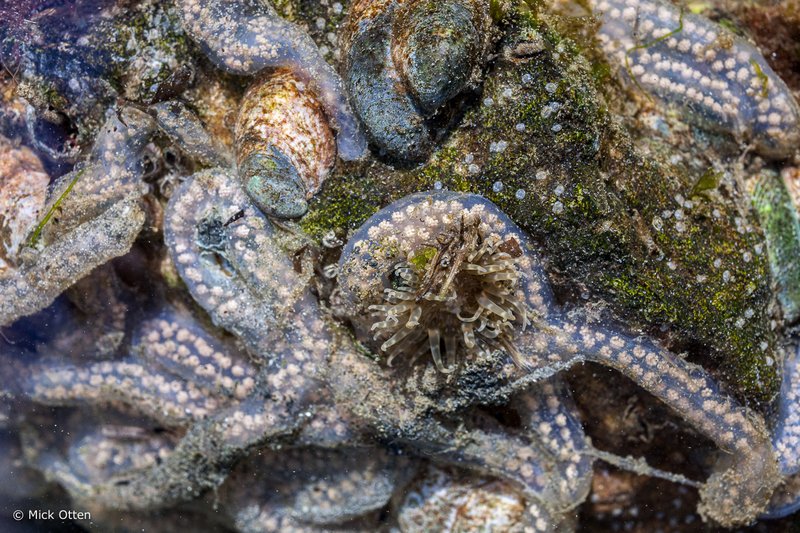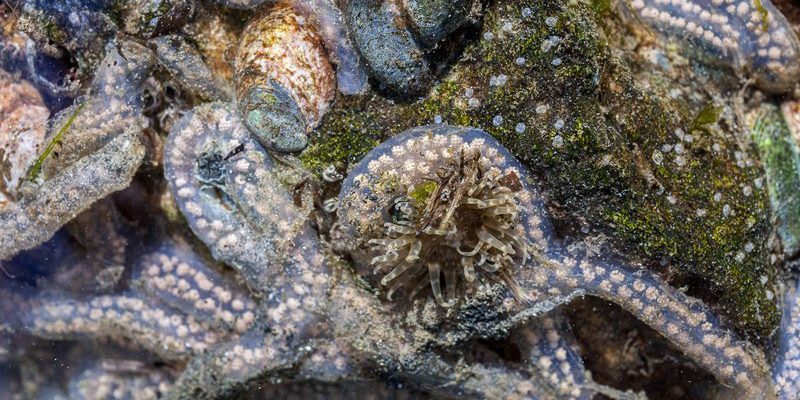
So, why should we care about these wiggly worms? Well, it turns out that bootlace worms, with their long, ribbon-like bodies, can have both positive and negative effects on small shellfish. Understanding this relationship helps us grasp the bigger picture of ocean ecosystems. Let’s dive into how these unique worms interact with shellfish and why that matters for marine health and sustainability.
What Exactly Are Bootlace Worms?
Bootlace worms, known scientifically as *Lineus longissimus*, are fascinating creatures that can grow up to 30 meters long! Yep, you read that right—these worms are among the longest animals on Earth. They are primarily found in European waters, hiding in the sand or mud, often going unnoticed unless you happen to spot one wriggling about. Imagine stumbling upon a living, squirmy ribbon—it’s both cool and a little creepy.
These worms belong to a group called *Nemertea*, and while they might not look like much, they play several roles in their ecosystems. They’re often predatory, feeding on smaller marine animals, which brings us to their impact on small shellfish. Despite their seemingly passive lifestyle, bootlace worms can affect the population dynamics of other creatures, giving rise to a complex web of interactions.
The Role of Bootlace Worms as Predators
You might be wondering what bootlace worms eat. Well, they primarily hunt small invertebrates, including various types of shellfish like clams and oysters. When bootlace worms find a shellfish, they can use their specialized proboscis to inject toxins, immobilizing their prey. This predatory behavior can keep shellfish populations in check, which, at first glance, sounds pretty harsh.
But here’s the thing: while it might seem detrimental to shellfish, this predatory dynamic is essential for maintaining a balanced ecosystem. A few bootlace worms here and there can help prevent shellfish populations from exploding, which could lead to overgrazing of algae and other resources. It’s nature’s way of ensuring that no species dominates and throws the ecosystem out of balance.
Competition for Resources
On the flip side, bootlace worms aren’t just predators; they can also compete with small shellfish for resources. They often inhabit similar environments, like muddy seabeds or sandy shores, where both shellfish and worms seek food and shelter. When bootlace worms are abundant, they can outcompete small shellfish for essential nutrients and habitat.
This competition can lead to a decline in shellfish populations, especially in areas where bootlace worms thrive. Imagine a crowded restaurant where everyone is fighting for the same slice of pizza—eventually, some diners will leave dissatisfied. That’s similar to what can happen in the ecosystem when bootlace worms outnumber the shellfish. It’s a delicate balance that hinges on the presence of predators and competitors.
Impact on Shellfish Health and Growth
Beyond predation and competition, bootlace worms can also influence the health and growth rates of small shellfish. When shellfish are frequently targeted by worms, they may become stressed. Chronic stress can lead to weakened immune systems, making them more susceptible to diseases and other environmental threats. As a result, a beleaguered shellfish population can have cascading effects on the broader marine ecosystem.
Moreover, healthy shellfish populations contribute to clean water systems by filtering nutrients. When bootlace worms reduce shellfish numbers, we might see an increase in phytoplankton and algae, leading to murky waters and less biodiversity. It’s a classic case of how one creature’s actions can ripple through an entire habitat, impacting everything from water quality to the types of fish that can thrive in those areas.
Bootlace Worms and Ecosystem Services
So, why should we care about all this? Bootlace worms can significantly impact the services our oceans provide. Shellfish, like clams and oysters, are not just tasty treats; they play crucial roles in maintaining healthy ecosystems by filtering water, providing habitat for other marine life, and supporting local economies through fishing and aquaculture.
When bootlace worms affect shellfish populations—whether through predation, competition, or stress—it can pose a risk to these valuable ecosystem services. A decline in shellfish could mean poorer water quality, which in turn affects fish populations, coastal protection, and even the livelihoods of people who rely on these marine resources.
Research and Conservation Efforts
Understanding the ecological impact of bootlace worms on small shellfish is crucial for conservation efforts. Researchers are currently studying these relationships to develop better management practices that ensure both bootlace worms and shellfish can coexist without one overwhelming the other. This research is vital, especially in light of environmental changes and overfishing, which can disturb the natural balance of marine ecosystems.
By monitoring bootlace worm populations and their interactions with shellfish, scientists can help develop strategies that protect fragile marine environments. This could include setting limits on fishing or creating marine protected areas where both bootlace worms and shellfish can thrive together.
The relationship between bootlace worms and small shellfish is a perfect example of how interconnected our marine ecosystems are. These worms, while not the most glamorous creatures, play a vital role in shaping the health and dynamics of shellfish populations. From their predatory behaviors to their competition for resources, bootlace worms influence the entire underwater community.
As we continue to study and learn about these fascinating worms, it becomes clear that understanding their ecological impact helps us protect our oceans and the life within them. Every organism, no matter how small, plays a part in the grand tapestry of nature. So next time you think about the ocean’s wonders, remember the humble bootlace worm and its significant role in the marine ecosystem!

